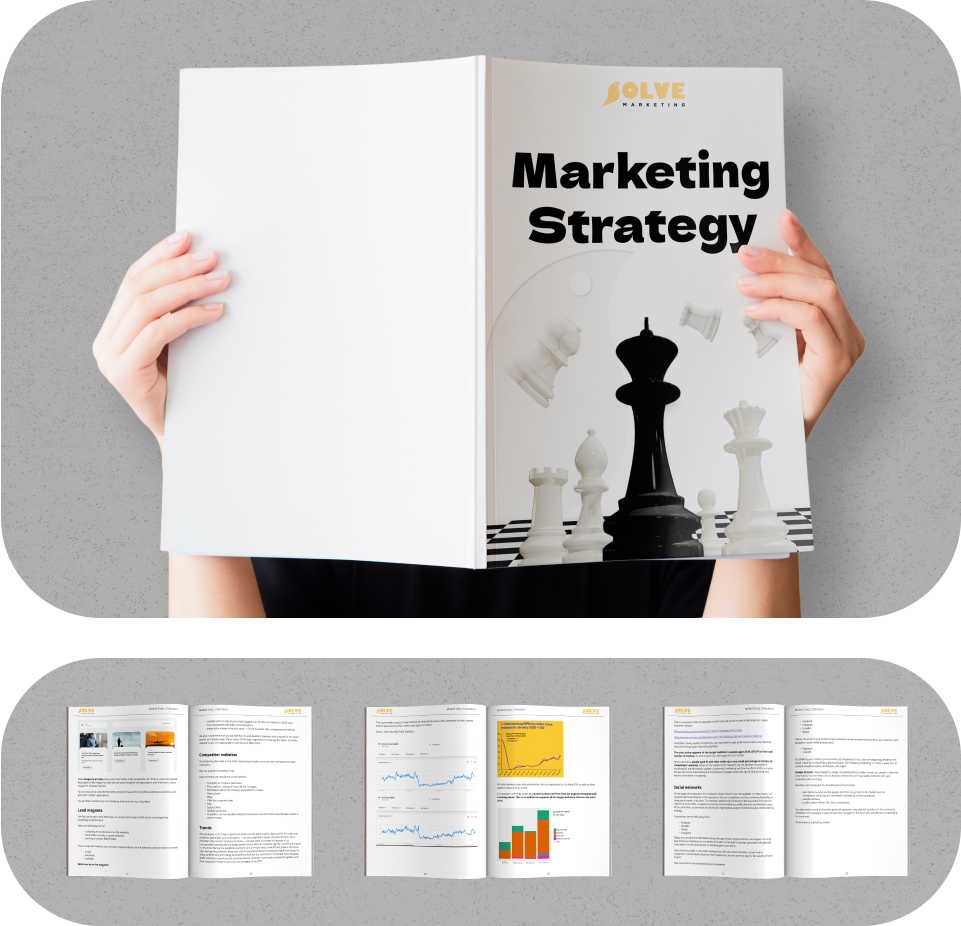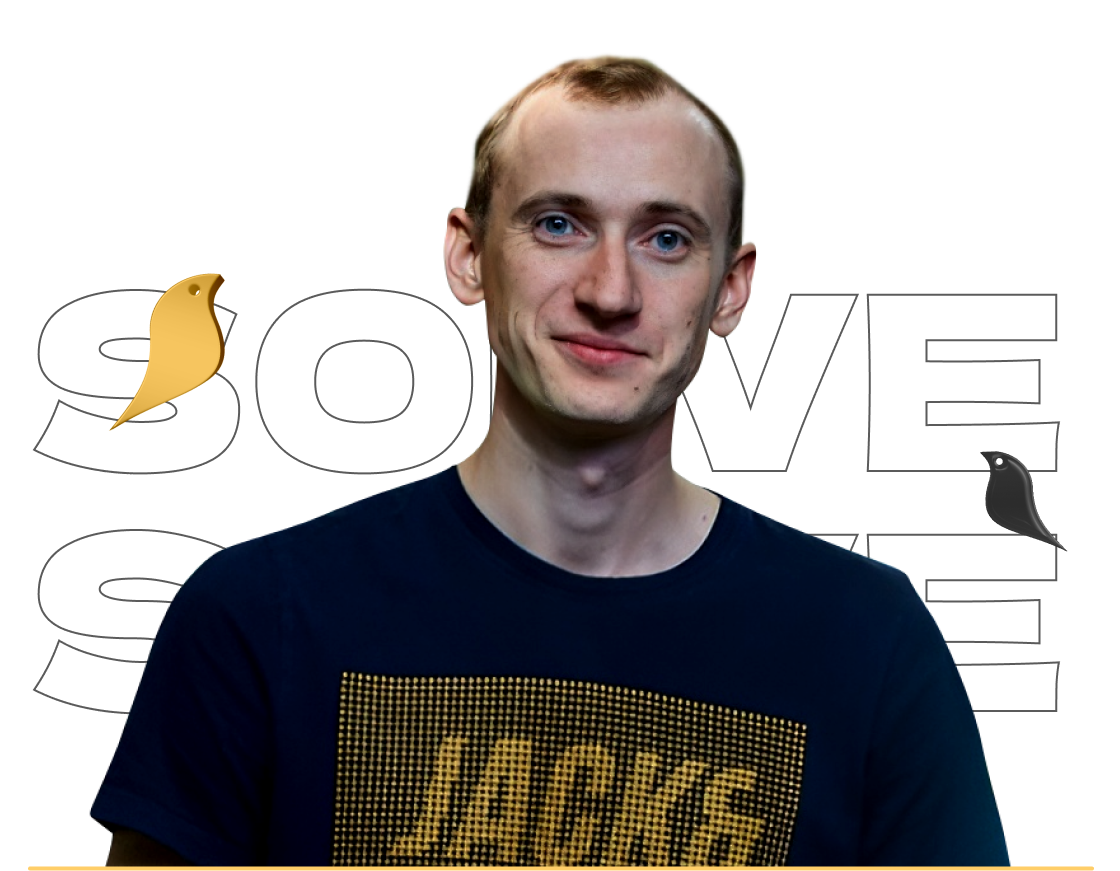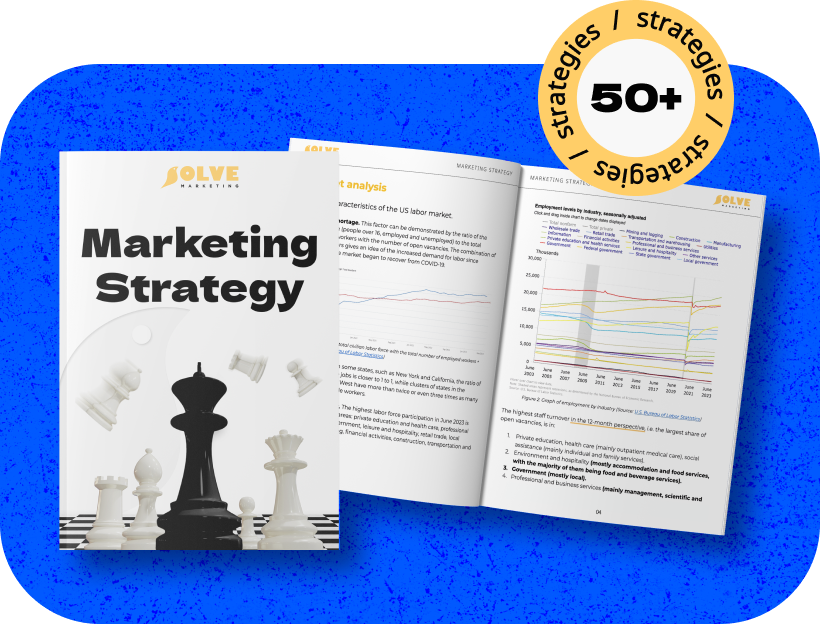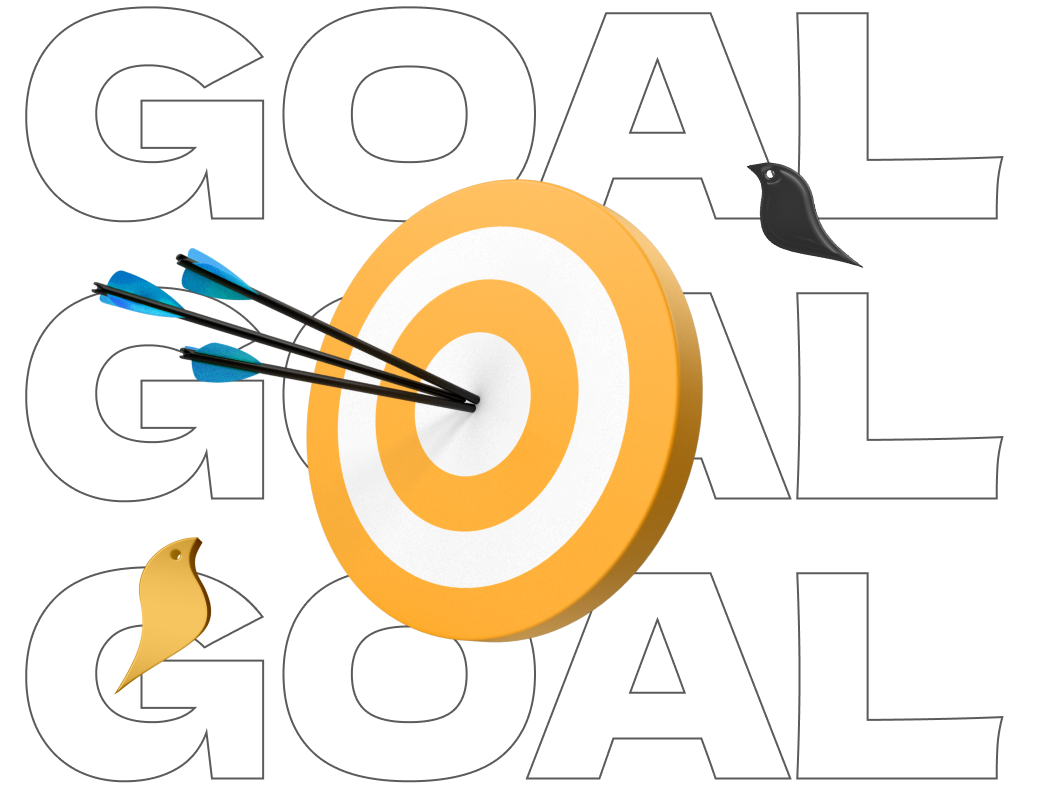Oh, a new application!
No time to read?
Leave a request and we will make a presentation at a time convenient for you.



No time to read?
Leave a request and we will make a presentation at a time convenient for you.
In 3 minutes
important about a marketing strategy
But why should you spend time on it?
01
Understand what we are talking about and whether your business needs it.
02
Understand the criteria for choosing an effective strategy.
03
How does a strategy from Solve Marketing differ from others?
So what is a marketing strategy and what distinguishes it from a document that only the author understands?
When we ask clients why they need a marketing strategy, we hear different answers. But the general meaning remains the same:
The client always has a choice — how to satisfy their need, a choice between companies, a choice between offers, a choice to remain your client or not. Whether this choice is conscious and rational is another question.
But have you ever thought about how many choice factors exist in your business? How many have you taken into account and which ones have fallen out of your attention?
In most businesses, there are 100+ factors that customers use to make a decision. Therefore, a marketing strategy is not equal to a plan to run ads. Advertising is just a way to attract customers’ attention.

CEO Solve Marketing Serhii Soloviov
CEO Solve Marketing Serhii Soloviov
Hi, I'm Petro Lozynskyi, a partner at Solve Marketing.

Want to get examples?
We have already developed more than 50 strategies and will be happy to share the best ones.

It starts with a clear definition of the goal and the timeframe for achieving it, for example:
Contains a study of the current situation:
Contains the most complete list of choice factors that customers rely on to make a decision.
Demonstrates the priority and interconnection of marketing tools to achieve the set goals.

The client needs to know about your way of meeting their needs.
For example, a client who knows nothing about laser vision correction will choose between glasses or contact lenses. Therefore, the client should be sufficiently informed about the way you offer to solve their needs.

The way your company describes itself in the marketplace, the customer should see the features that are important to them.
This includes positioning, values, and many other features that are important to your market segment.

From the first touch to the signing of the agreement, the client is in contact with and takes into account 50+ factors of choice.
Consciously or subconsciously, these factors influence every decision a customer makes on the way to closing a deal. It’s important to design and implement the ideal interaction experience that will influence the decision to start and continue cooperation.
You'll be surprised to know that price is
not the main factor for most customers.

All that (so far) distinguishes you from your more successful competitors are the choice factors that they have, but you don't have yet.
we will bring your strategic planning to a whole new level of awareness.
A team of 6 specialists is working on the development of the marketing strategy:



Khrystyna Stokolosa
Operational Marketer


Petro Lozynskyi
Lead generation specialist

Andrii Sokoliuk
Lead generation specialist
80+ hours
of teamwork
6
specialists
from 2 weeks
80+ hours
of teamwork
6
specialists
from 2 weeks
Positioning is a method of finding a free category in the mind of the buyer with which it is beneficial to associate the name of a company or product.
Positioning indicates one main or combines several important factors of choice.
80+ hours
of teamwork
6
specialists
from 2 weeks
Get an example
Do you want to see what you’ll get in the end? Leave a request and our manager will send you an example of a ready-made strategy that is as close as possible to your business area.
It all starts with a free consultation with a Solve Marketing marketer.
The cost is calculated depending on your wishes, business area, and other factors. We have three price offers, so leave a request and we will select the best tariff plan for you.
During the consultation, we discuss:
Plans and needs
of your business.
The main tasks of
the marketing strategy.
The cost of such
work.
Get a free consultation and a personalized commercial offer.

We know exactly what we do and why we do it.
A marketing strategy is not a work of fiction, but a research-based list of actions to be taken. We’ll explore what choice factors you’ve already implemented, what needs to be improved, and what needs to be carried out.

The cat is out of the bag.
We do our best to match your expectations with the result we provide. We will get to know you, consult, provide examples of strategies for other businesses, customer contacts — everything you need to make sure that the packaging and content are worth it.

The most understandable methodology for strategic planning based on choice factors.
We research the market and your business, and provide you with the most comprehensive list of choice factors that influence your customers’ decisions, and turn this into tasks. This way, you can easily make sure that the action plan we propose is relevant to reality. Our strategy makes everything simple and clear.

Will there be demand for a new product or not? One study provides answers to many questions of entrepreneurs.

How to avoid spending all the startup capital on targeting? We show how we reduced the cost of leads by 40% in a month.

Should I entrust my own finances to a startup? Here's how we increased project loyalty through communication.
A marketing strategy is a long-term plan for achieving business goals: launching a new product, increasing sales, or entering a new market. It includes market and competitor analysis, audience research, positioning, selection of promotion channels and tools.
The strategy sets a systematic course: from clear goals and KPIs to a step-by-step Action Plan with deadlines and responsibilities. This is the basis that allows businesses to avoid chaotic actions and move towards measurable results. At Solve Marketing, we build strategies based on the choice factors of customers in your niche, so that the plan is as close to reality as possible and works for the company’s growth.
A marketing strategy is a management tool that transforms marketing from a chaotic activity into a systematic process. Without it, businesses usually operate in a fragmented manner. The strategy allows:
A marketing strategy is a growth tool that helps companies at different stages of development:
The standard development of a marketing strategy includes:
The results are measured by specific indicators:
According to Solve Marketing’s practice, the average ROI from the developed strategies is from 250% in the EdTech sector and more than 600% in IT/SaaS. This proves that a systematic approach not only reduces risks but also provides tangible financial growth.
Strategy development involves several steps:
The cost always depends on the scope and number of studies. The more markets, competitors, or hypotheses you need to test, the bigger the scale of the work.
At Solve Marketing, we work at a fixed price, which we agree on at the start.
After the strategy is approved, the company proceeds to the implementation stage, which consists of four key steps:
At Solve Marketing, each stage is implemented as part of a single marketing department. This ensures seamless integration of processes, control of analytics at all stages, and a steady progress towards results.
Marketing environment analysis is a comprehensive study of the factors that determine the conditions for business development. It includes:
The purpose of the analysis is to identify growth points and potential risks. This is the first and mandatory stage of developing a marketing strategy.
The analysis of marketing activities allows you to see the real efficiency of the company’s work and understand where resources are actually going. It includes:
At Solve Marketing, we use this analysis to identify marketing strengths and weaknesses, identify growth points, and create an optimisation plan. This allows businesses to focus on the tools that bring results.
An audit is a check on the effectiveness of a company’s marketing activities. It shows:
The result is a report with specific recommendations: what to keep, what to optimise, and what to change. At Solve Marketing, an audit is always the first step before updating or creating a strategy, so that further actions are based on analytics, not assumptions.
Marketing research is the collection and analysis of data about the market, competitors, and customers. The main methods are surveys, interviews, open data analysis, and competitive analysis. Thanks to research, businesses understand:
At Solve Marketing, we conduct research using a variety of methods, combining quantitative (numbers, surveys, analytics) and qualitative (interviews, observations, behavioural analysis) approaches. This is the first and critical stage of creating a marketing strategy.
Przejdziemy na język angielski
Znajdujesz się teraz na stronie, która nie jest jeszcze dostępna w języku polskim. Sugerujemy więc przeczytanie wybranej treści w języku angielskim.
